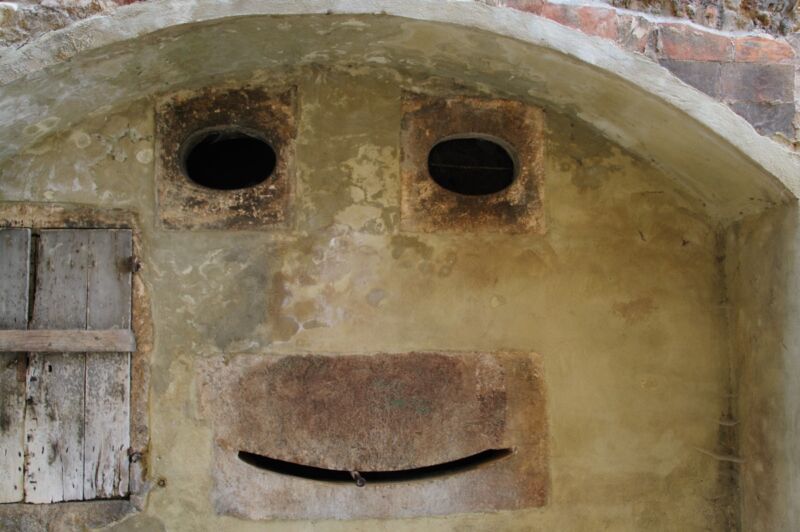
Enlarge / This wall in an old town in Tuscany, Italy, illustrates the phenomenon of facial pareidolia, or seeing faces in things. (credit: DirkTalsma/iStock/Getty Images)
Human beings are champions at spotting patterns, especially faces, in inanimate objects—think of the famous “face on Mars” in images taken by the Viking 1 orbiter in 1976, which is essentially a trick of light and shadow. And people are always spotting what they believe to be the face of Jesus in burnt toast and many other (so many) ordinary foodstuffs. There was even a now-defunct Twitter account devoted to curating images of the “faces in things” phenomenon.
The phenomenon’s fancy name is facial pareidolia. Scientists at the University of Sydney have found that, not only do we see faces in everyday objects, our brains even process objects for emotional expression much like we do for real faces rather than discarding the objects as “false” detections. This shared mechanism perhaps evolved as a result of the need to quickly judge whether a person is a friend or foe. The Sydney team described its work in a recent paper published in the journal Proceedings of the Royal Society B.
Lead author David Alais, of the University of Sydney, told The Guardian:




